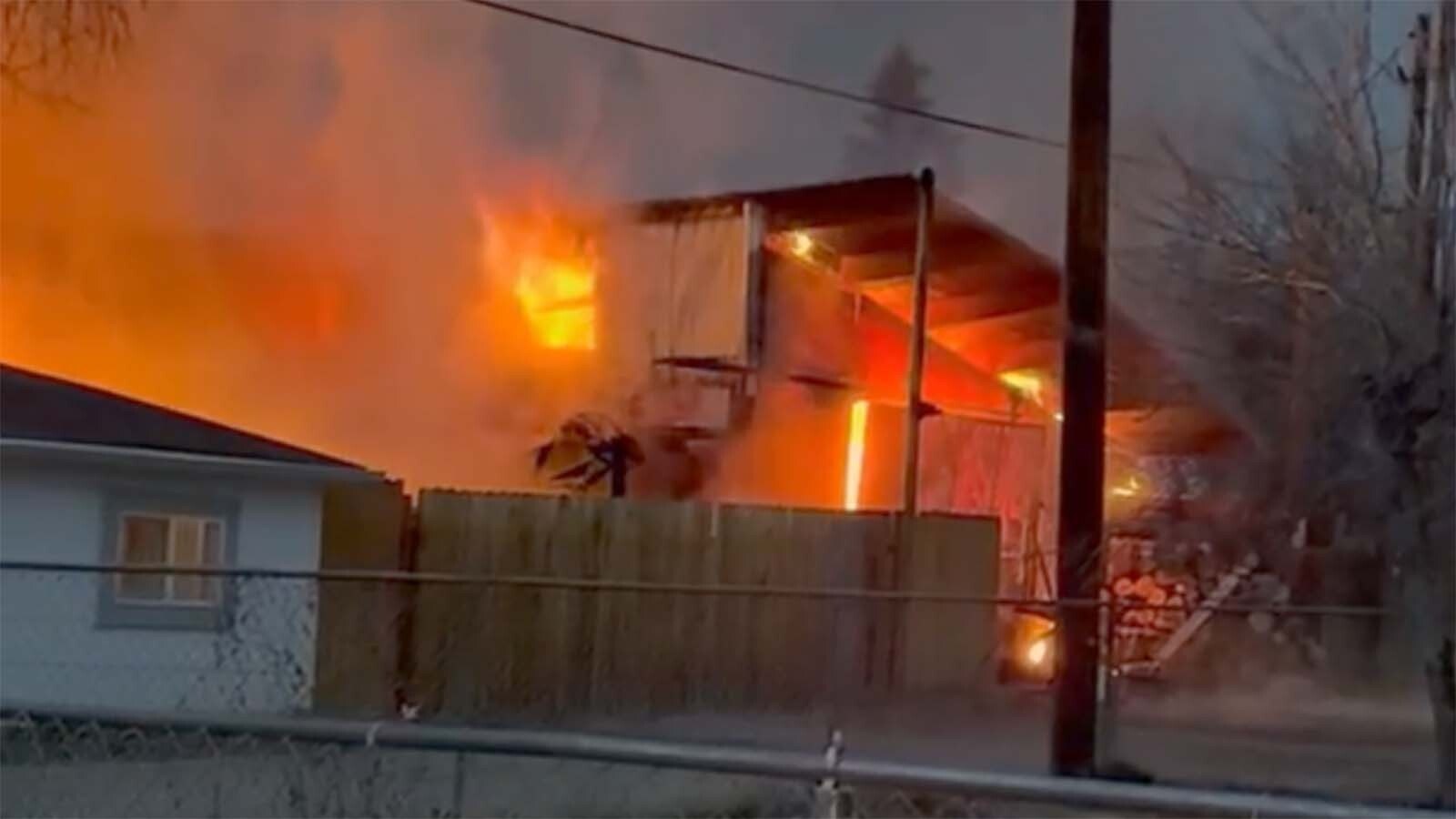A kayaker had a brief but biblical experience in the Pacific Ocean off the coast of Chilean Patagonia. Adrian Simancas was almost swallowed by a humpback whale, which closed its mouth around him and his kayak before releasing him a few seconds later.
A video of the unusual encounter has taken the world by storm. Whales rarely cause problems for ocean kayakers, and this incident appears to be a whale-sized mistake.
“My first reaction was I thought it was fake,” said Travis Welch, an experienced kayaker and president of World Travel Project. “I was pretty amazed, and it’s pretty dang cool.”
There are no whales in Wyoming, but there are plenty of places where kayakers could be "swallowed up" by dangerous rapids and wind-covered lakes. Kayaking isn't a risk-free activity, but it's becoming more popular in the Cowboy State.
Whale Of A Tale
Welch, a Lander resident, has gone kayaking on the Pacific Ocean and has encountered whales multiple times.
“I’d have humpbacks and orcas surface within 40 feet of me,” he said. “It can be really intimidating because you have no idea where they are most of the time. You want to trust yourself, that you know where they are, but it doesn’t remove the fear of having a gigantic animal somewhere underneath you.”
Welch has never been worried about being attacked by whales, which are usually placid and curious more than anything. Nevertheless, there’s an inherent risk when you’re on the water with a whale.
“I wasn't concerned that the animal was going to attack,” he said, “but an inadvertent bump can flip a kayak over pretty easily, and in cold water like that, consequences are pretty high.”
Pacific Ocean water temperatures can range from 68 to 39 degrees this time of year. A whale might not kill a kayaker, but hypothermia definitely could.
After watching the video, Welch believes the humpback whale inadvertently swallowed Simancas while attempting to feed. The whale’s behavior was a classic demonstration of “bubble netting.”
“The whale blows bubbles in a circle, which confuses the fish so they stay within that circle,” he said. “Then, the humpback goes down deep and swims straight up, fully opening its mouth at the surface to catch the fish in the column of water they bubbled up.”
Simancas might have inadvertently paddled into the middle of the bubble column. That would explain why the whale’s mouth closed around and immediately released him, especially since they don’t have the taste or the hardware for consuming humans.
“Whales are filter feeders,” Welch said. “They don’t have teeth, just big plates of baleen. I don’t see how a person or a boat could reach the stomach. Spitting them back out was the only outcome I could imagine.”
Air-Filled Alpacka
Welch was able to identify the kayak Simancas almost got swallowed in. It was an Alpacka packraft, an inflatable kayak produced by Alpacka Raft, a company in Mancos, Colorado.
“They’re the company that made the packrafting industry,” he said. “They’re really fun inflatable boats that don’t weigh a ton, so they can be transported easily.”
Packrafting is becoming an increasingly popular outdoor recreation activity, even in Wyoming. Welch said there’s “an emerging packrafting community” of people packing inflatable boats into the backcountry to make the most of their trips.
“I did a packrafting trip last summer in the Red Desert,” he said. “We inflated our kayaks and paddled down the river for eight miles. Then, we rolled them back up, put them in our backpacks, and hiked back to the car.”
Since they’re filled with air, it would take a lot of force to keep an Alpacka packraft fully submerged. That might have helped prevent Simancas from being swallowed.
Welch has never seen an Alpacka on the ocean, but that doesn’t mean it isn’t seaworthy. In fact, he recommended Alpackas as an ideal watercraft for the casual Wyoming kayaker.
“They’re a lot of fun,” he said.
Swallowed Up In Wyoming
While plenty of sea monsters lived in Wyoming in prehistoric times, there are and never have been any whales in Wyoming today. The University of Wyoming Geological Museum recently acquired a dolphin, but that’s not quite the same thing.
Nevertheless, there are plenty of places where kayakers could be “swallowed up” while kayaking in Wyoming. Welch could think of several treacherous places where kayakers could be submerged and sucked into a place that would be difficult to escape.
“The bigger rivers and waterfalls we have in Wyoming are certainly quite dangerous,” he said. “The Snake River over by Jackson has some substantial rapids where you could get submerged and sucked down under the water. And paddling underneath dams can be very dangerous.”
A more significant hazard for Wyoming kayakers is the winds. That’s where a lightweight Alpacka packraft could become a liability.
“The wind the rips across some of our lakes and rivers can be treacherous,” Welch said. “Even if it doesn’t tip you over, you might get stuck where you can’t get to shore or your car easily.”
In September 2021, Mark O’Neill and Kim Crumbo went missing on a four-day backpacking trip in Yellowstone National Park.
O’Neill’s body was found on the east shore of Shoshone Lake, while Crumbo remains missing. National Park Service crews found a vacant campsite that included a canoe, paddle, and personal floatation devices the pair had used during their trip.
Welch said that kayaking “is not a risk-free activity,” but he doesn’t think it’s dangerous enough that it should deter anyone, even beginners.
“General environmental awareness and paying attention to the weather is always important, but there are risks wherever you go. And, apparently, those risks include being swallowed by a whale in the Pacific Ocean.”
Perfect Paddling Places
For any Wyomingite who saw Simancas’s near miss with the humpback whale and was inspired to go kayaking, Welch has some suggestions on where to start.
“Any of our lakes and reservoirs are fabulous for first-timers,” he said. “Yellowstone has some incredible kayaking and canoeing, but any of our flatwater lakes and many of our rivers are great.”
Welch suggests that any first-time kayaker start on flat or calm waters before tackling the rougher waters of rivers and some lakes. With the right equipment (and the proper permits, depending on where you go), kayaking can be a great way to enjoy Wyoming’s immense natural beauty.
“Anecdotally, I’d say the Boysen Reservoir looks a heck of a lot like Baja Mexico without the cactus, and that’s a world-class sea kayaking destination,” he said. “There is outstanding water recreation in Wyoming.”
And no whales, to boot.
Contact Andrew Rossi at arossi@cowboystatedaily.com
Andrew Rossi can be reached at arossi@cowboystatedaily.com.







